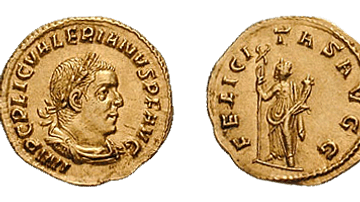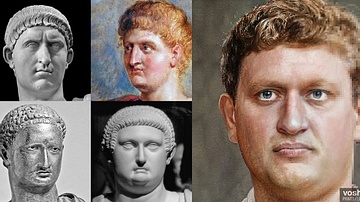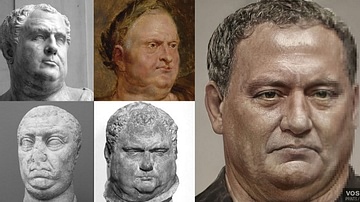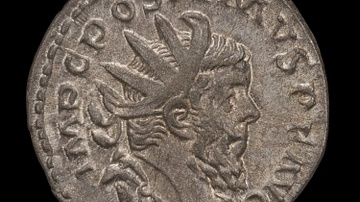Search
Search Results

Definition
Maximinus Thrax
Maximinius Thrax ruled briefly as the Roman emperor from 235 CE to his death in 238 CE. The young Roman Emperor Alexander Severus secured the imperial throne after the assassination of his cousin Elagabalus by the Praetorian Guard in 222...

Definition
Valerian
Valerian ruled as emperor of the Roman Empire from 253 CE until his capture in 260 CE. In 253 CE an elderly Roman military commander and experienced former senator was proclaimed emperor by his troops - a very common occurrence at the time...

Definition
Battle of Immae
The Battle of Immae (272 CE) was fought between the forces of the Roman emperor Aurelian (270-275 CE) and those of the Palmyrene Empire of Zenobia (267-273 CE) resulting in a Roman victory and, ultimately, the capture of Zenobia and an end...

Definition
Holy Roman Empire
The Holy Roman Empire officially lasted from 962 to 1806. It was one of Europe’s largest medieval and early modern states, but its power base was unstable and continually shifting. The Holy Roman Empire was not a unitary state, but a confederation...

Image
Galba (Artistic Facial Reconstruction)
A photorealistic representation of what the Roman emperor Galba (r. 68-69 CE) may have looked like. Pictured alongside the reconstruction are the Capitoline bust of Galba and the bust from the Stockholm Museum of Antiquities, used as references...

Image
Vespasian (Artistic Facial Reconstruction)
A photorealistic representation of what the Roman emperor Vespasian (r. 69-79 CE) may have looked like. Pictured alongside the reconstruction are the artworks and statuary used as references. From left to right and top to bottom, these are...

Image
Otho (Artistic Facial Reconstruction)
A photorealistic representation of what the Roman emperor Otho (r. 69 CE) may have looked like. Pictured alongside the reconstruction are the busts and artwork used as references. From left to right and top to bottom these are the Louvre...

Image
Vitellius (Artistic Facial Reconstruction)
A photorealistic representation of what the Roman emperor Vitellius (r. 69 CE) may have looked like. Pictured alongside the reconstruction are the artworks and statuary used as references. From left to right and top to bottom are the Louvre...

Definition
Decius
Decius was Roman emperor from 249 to 251 CE. In 249 CE Roman emperor Philip the Arab sent senator Decius to be the governor of the troubled provinces of Moesia and Pannonia. Roman legions under the ineffective command of the governor there...

Definition
Postumus
Postumus was Roman emperor from 260 to 269 CE. Marcus Cassianus Latinius Postumus was a trusted military commander of Emperor Gallienus (253-268 CE) and governor or Germania Superior and Inferior (Upper and Lower Germany). After the death...